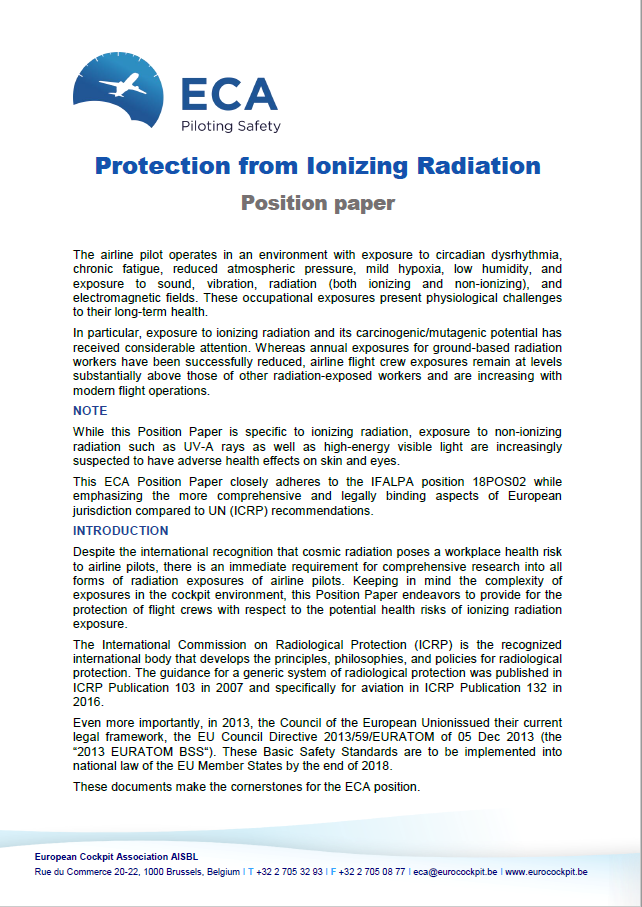

Exposure to ionising radiation may be understudied but is a well-known health risk factor. For pilots and cabin crew – who spend their working days and nights in the air – this exposure is even more of a threat. In addition, the surge to choose nowadays more direct routes often increases the exposure.
While Europe is a role model in the world with its health and safety rules on protection from ionising radiation, crew still need to be aware of what are the options to reduce the exposure and what are the obligations of the airlines towards them.
The European Union adopted new rules in 2000 and EU Member States had to implement them by February 2018. This means that all EU airlines are now required to keep track and calculate crews’ annual radiation dosage. Since few commercial aircraft are equipped with radiation detectors, this is still done using mathematical models to predict the exposure. All European air carriers are required to have a system to keep track and record such data. The radiation records should be kept for a 12-month period after the last complete 12-month period recorded, i.e. for two years. When switching jobs, crew are entitled to a copy of their records that could be passed on to a new employer.
In addition, European airlines have an obligation to educate and raise awareness about the ways crew could reduce their exposure, the effects of flying above optimum altitude, and the possible exposure reduction by avoiding short time step climbs or lateral rerouting. A recent ECA Position Paper outlines the key hurdles and recommendations for reducing the impact of ionising radiation. Download your copy here.

An ECA Position Paper outlines the key hurdles and recommendations for reducing the impact of ionising radiation.